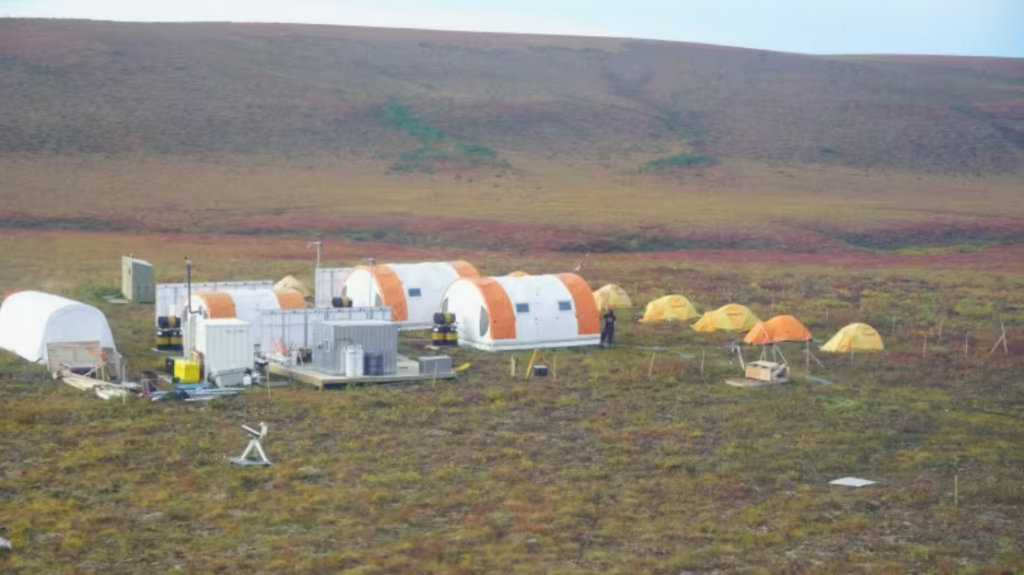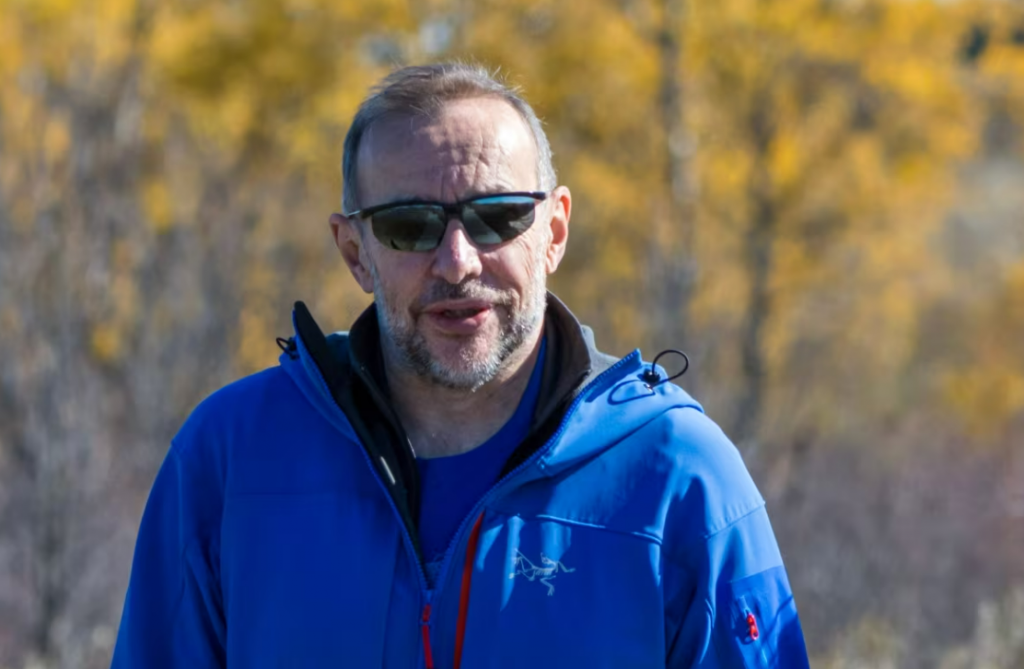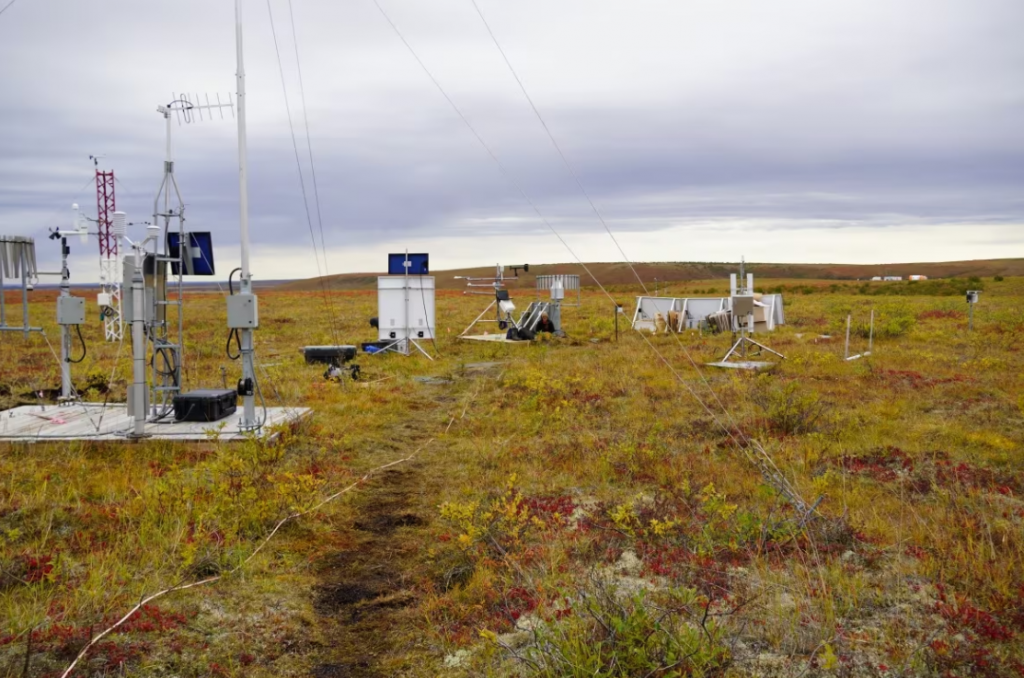32 years on, research station north of Inuvik, N.W.T., still going strong

It may be one of the North’s lesser-known research camps, but the Trail Valley Creek Research Station north of Inuvik, N.W.T., has been active for more than three decades now — collecting valuable data on climate change, wildfires, and the northern environment.
The camp is about 50 kilometres north of Inuvik, nestled in the bush. It was established in 1991 as a place for researchers to gather information in the field.
Station founder Philip Marsh, a professor at Wilfrid Laurier University in Waterloo, Ont., says he didn’t expect the station to stay open past its original three-year contract.
“At the time, I didn’t think of it as being long-term like it turned out to be,” said Marsh. “But now we definitely have long term plans for the site.”

Through the years, thousands of people collecting data on northern climate change have used the station as a base on the tundra.
Kathryn Bennett is a student from the University of Montreal studying permafrost thaw and beaver populations in the area.
“It’s a really special opportunity to be able to work in these places and learn more about them, how it’s impacting the local community here and the rest of the world. I think about the things that go up into the atmosphere and are important for our whole planet,” she said.
More than 50 researchers from all across the world use the camp during the year.

Marsh says different funding sources from various research projects have kept the station in operation.
The area has traditional significance as well. Marsh says it was previously used for reindeer herding before the animals were moved to a different location.
All the data collected at the station is shared with the Aurora Research Institute and other local organizations.
A story written by Dez Loreen
Related stories from around the North:
Antarctica: South Pole warmed 3 times the global rate over the past 30 years, new study suggests, Thomson Reuters
Arctic: Latest projections show “enormous challenge” ahead in meeting climate targets says WMO, Eye on the Arctic
Canada: Indigenous leaders in northwestern Canada declare climate emergency, CBC News
Finland: Finland behind on sustainable development goals, Yle News
Greenland: COVID-19 delay, early ice melt challenge international Arctic science mission, The Associated Press
Iceland: Ice-free Arctic summers likely by 2050, even with climate action: study, Radio Canada International
Norway: Norway to expand network of electric car chargers across Arctic, The Independent Barents Observer
Russia: Record 38C temperature recorded in Arctic Siberia, Eye on the Arctic
Sweden: January temperatures about 10°C above normal in parts of northern Sweden, says weather service, Radio Sweden
United States: Temperatures nearing all-time records in Southcentral Alaska, Alaska Public Media




It was on 17 February 1868 that POTUS Andrew Johnson issued an Executive Memorandum on the United States interests in the High Arctic to the North of Russia. JOHNSON directed that Wrangell’s Land which was the name which Charles Francis Hall coined for what the British Admiralty coined as Kellett Land. That was not the first time the US showed an interest in land to the north of Russia nor the last.
In 1855 the US Navy unfurled a US Flag over Herald Island by sailor J. Watt. Then on 13 September 1871 at Thank God Harbor on.Greenland a landing party from USS Polarus headed by Charles Francis Hall took
formal possession of Greenland in the name
of G-d, POTUS Grant and the SECNAV.
In 1880 Major Ezra W. Clark, Jr., USV (ret.) as the Chief of the United States Revenue Marine order Captain Calvin Hooper, USRM of the steamer Thomas Corwin to annex Wrangell’s Land in the name of the United States based on that standing Executive Memorandum of POTUS Johnson. Hooper did not forget that order from Ezra Clark, Jr.,
because in the following year of 1881 on 12 August 1881, a landing party headed by 3rd Lt. William Edward Reynolds (which included John Muir and Edward Nelson) landed at Cape Corwin by the delta of the Clark River and took formal possession of “New Columbia Land” in the name of G-d, POTUS, and the Secretary of the Treasury.
On 17 December 1883, Senator Benjamin Harrison in room 41 at the US Capitol directed Ezra W. Clark, Jr. to draft a Bill which became on 17 May 1884 the Harrison Alaska Organic Act. Clark was also directed that the bill was to be crafted to add territory to Alaska. Benjamin Harrison further directed that six island shall be added to Alaska, viz.,
Bennett, Forrester, Henrietta, Herald, Jeannette, and Wrangell.
On 17 May 1884, the Alaska Board of the United States Department of the Treasury by resolution under the authority of Section 1 of the Harrison Alaska Organic Act added those six islands to the District of Alaska.
It was on 1 April 1924 that the Lomen Brothers of Nome, Alaska went on title to the whole of Wrangell Island. Also in that year 1924, Captain Louis L. Lane of Nome, Alaska went on title ro the whole of Herald Island.